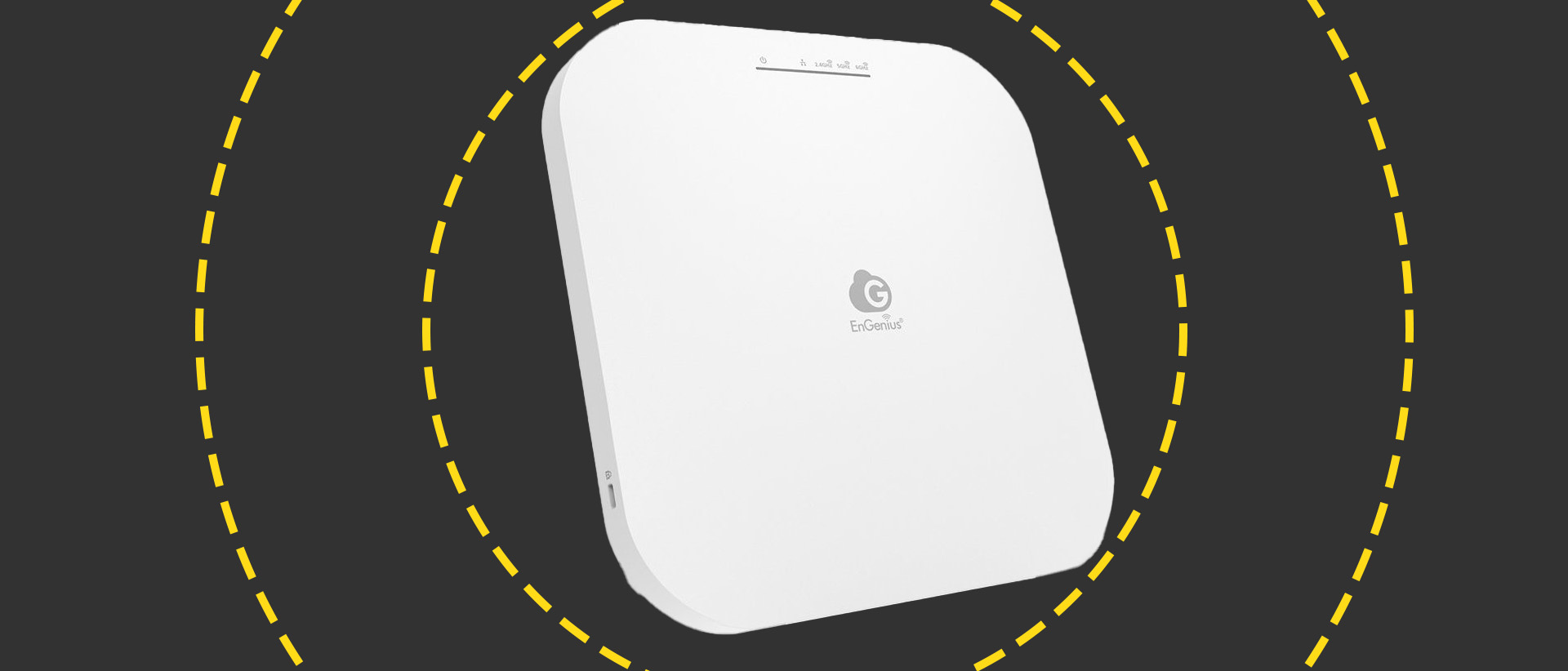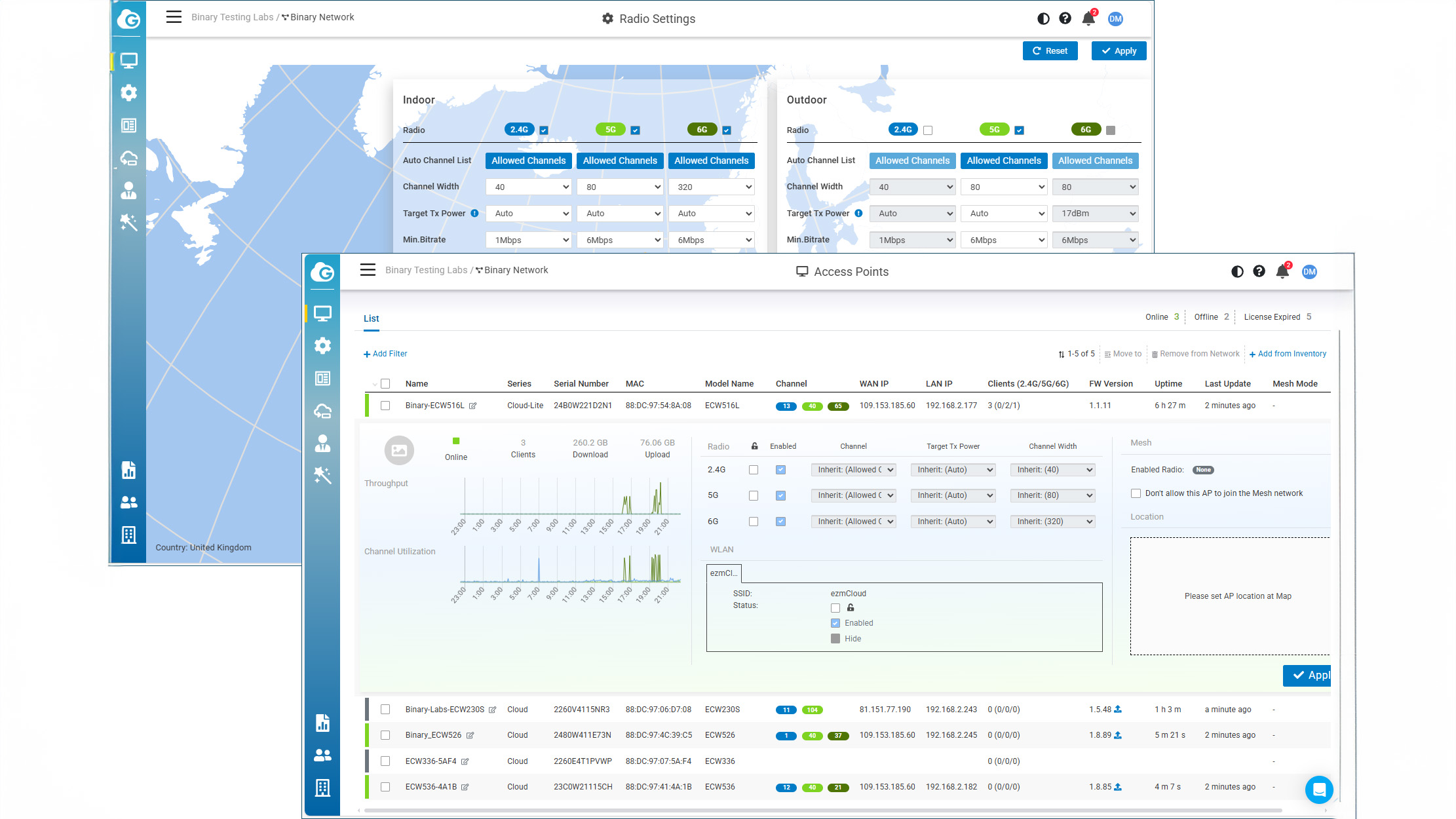EnGenius ECW516L review: Affordable Wi-Fi 7 services for smaller businesses
The EAP516L is a feature-rich business Wi-Fi 7 access point with free cloud management and a fair performance for the price

-
+
Good value
-
+
Easy deployment
-
+
Reasonable Wi-Fi 7 performance
-
+
Free Lite cloud management
-
-
No standalone mode
-
-
CPU wilts under heavy load

While some wireless network vendors dithered with support for Wi-Fi 7, EnGenius went full steam ahead over a year ago and now offers an extensive range of access points (APs). The ECW536 and ECW526 impressed us with their fine combination of features and performance, but their comparatively high price tags put them beyond the budgets of smaller businesses.
The 'Lite' range rectifies this and introduces three new APs with a sharp focus on value. The ECW210L and ECW212L are Wi-Fi 6 APs, while the ECW516L, on review, delivers Wi-Fi 7 services at a more affordable price.
It may be an entry-level model, but the ECW516L surprises with its big BE14000 rating – much higher than the more expensive BE9300-rated ECW526. It offers eight spatial streams comprising two for its 2.4GHz radio plus three each for the 5GHz and 6GHz bands and claims maximum speeds of 700Mbits/sec, 4,300Mbits/sec and 8,700Mbits/sec respectively.
EnGenius ECW516L: Hardware features
There are a number of compromises to get the price down as the ECW516L sports a basic 2GHz Mediatek MT7986A A53 CPU. The ECW536 and ECW526 get the benefit of a more powerful Qualcomm Networking Pro 1220 platform, which employs a quad-core ARM Cortex-A73 CPU.
Furthermore, whereas its bigger brothers have high-speed 10GbE ports, the ECW516L receives a 2.5GbE multi-Gig port. This only requires an 802.3at PoE+ power source, or you can use the power jack alongside with the optional adapter costing around £20.
Weighing 616gms, the ECW516L is 104gms lighter than the ECW526 and easily wall or ceiling mounted. The box includes a complete kit with wall-mount screws and plugs plus two sizes of T-Rail brackets for dropped ceilings.
Status LEDs are in abundance as the AP has one for power and cloud management connection, another for the LAN port, and separate ones for each radio. General build quality is good as the ECW516L has a solid polycarbonate front cover and a finned metal chassis which acts as a heatsink.
Sign up today and you will receive a free copy of our Future Focus 2025 report - the leading guidance on AI, cybersecurity and other IT challenges as per 700+ senior executives
EnGenius ECW516L: Cloud management
As with all ECW models, the ECW516L can only be cloud-managed and Engenius introduces a new low-cost Cloud Lite service offering a reduced feature set. All Lite APs come with a licence-free basic plan included in the price, which is similar to the standard ECW version but designed for up to 50 users, supports 100 concurrent devices per AP, and doesn't offer features such as Hotspot 2.0 and dynamic VLAN services.
You can upgrade to a Lite Professional plan at any time with a 1-year license costing only £8 and a 3-year licence upping this to around £18 per device. These increase log storage to 30 days and add features such as device configuration backups, real-time views of connected clients, and facilities to export client lists to CSV files.
For testing, we connected the AP to the lab's Engenius ECS2512FP cloud-managed 2.5GbE PoE+ switch and used the Cloud To-Go iOS app on an iPad to scan its QR code. Once the AP was added to our organisation, it started broadcasting all our predefined SSIDs.
The Engenius cloud portal sees a few new design touches and presents a non-customisable dashboard displaying connection details of all APs and switches with graphs showing the number of connected wired and wireless clients plus power status for PoE switches. Enable the application control service on your SSIDs, and the dashboard adds another table below showing the top ten apps and their bandwidth usage.

Each site supports up to eight SSIDs, and for each one, you can decide which radios are active, enable L2 isolation, band steering plus fast roaming and apply download and upload rate limits for the entire SSID or per client. Note that SSID masking is not supported on the 6GHz radio, and the ECW516L doesn't support the Wi-Fi 6 160MHz channels.
Engenius takes wireless security seriously as it won't allow you to present open, unsecured SSIDs. You can choose from OWE (opportunistic wireless encryption) for safe open public networks or apply the appropriate encryption version up to the mandatory WPA3 for Wi-Fi 7.
The ECW516L supports wireless meshing but only with other Lite APs and not the standard ECW models. You enable this in the cloud portal's radio page and can have a mesh of up to eight nodes, preferably with no more than two hops between them and the root node.
EnGenius ECW516L: Wi-Fi 7 performance
To test performance, we called up the lab's Lenovo Windows 11 Pro desktop client equipped with a TP-Link Archer TBE550E Wi-Fi 7 PCIe adapter and hooked up a Windows Server 2025 host to one of the switch's fibre 10GbE ports. Starting with Microsoft's NTttcp utility, we recorded reasonable raw upstream and downstream speeds between the desktop and server of 235MB/sec and 202MB/sec.
Real world SMB tests using large file copies between the client and server returned average close-range speeds of 191MB/sec dropping to 179MB/sec with the AP moved 10 metres away and into an adjoining room. Performance isn't overwhelming but it is in the same range as many other low-cost Wi-Fi 7 APs we've tested.
The TP-Link Wi-Fi 7 adapter supports MLO (multi-link operations) using MLMR (multi-link multi-radio) and after enabling it on the ECW516L, we could see that our Windows 11 client had created an aggregated link across the 6GHz and 2.4GHz radios. Windows showed the aggregated link speed as 6,453Mbits/sec but further runs of NTttcp didn't see any noticeable performance improvements.
One thing we did spot was the MediaTek CPU struggling with our NTttcp stress tests as the cloud portal's AP diagnostics graph showed utilization getting close to 100%. The web portal also warns that using the application analysis service can hit performance, and further tests showed it dropping wireless speeds by up to 10%.
EnGenius ECW516L review: Is it worth it
For a BE14000-rated Wi-Fi 7 AP, the ECW516L represents reasonably good value for small businesses looking to upgrade their wireless networks. We could only find two UK resellers with Solwise offering the best price of £190 excluding VAT.
Overall Wi-Fi 7 performance is good and although the AP's CPU will struggle under heavy load, it's unlikely to cause any problems in less demanding small business environments. Along with an easy deployment, the ECW516L delivers plenty of features for the price and the free Lite cloud portal provides great remote management features.
EnGenius ECW516L specifications
Type | BE14000 tri-band 2.4GHz/5GHz/6GHz 802.11be | Row 0 - Cell 2 |
CPU | 2GHz Mediatek MT7986A A53 | Row 1 - Cell 2 |
Aerials | Internal – 2 x 2.4GHz, 3 x 5GHz, 3 x 6GHz | Row 2 - Cell 2 |
Network | 2.5GbE multi-Gig (LAN/802.3at PoE+) | Row 3 - Cell 2 |
SSIDs | Max. 8 | Row 4 - Cell 2 |
Mounting | Ceiling/wall | Row 5 - Cell 2 |
Brackets included | Yes | Row 6 - Cell 2 |
Power | Optional external PSU | Row 7 - Cell 2 |
Dimensions (WDH) | 205 x 33 x 205mm | Row 8 - Cell 2 |
Weight | 616gms | Row 9 - Cell 2 |
Management | EnGenius Cloud | Row 10 - Cell 2 |
| Row 11 - Cell 0 | Row 11 - Cell 1 | Row 11 - Cell 2 |
Dave is an IT consultant and freelance journalist specialising in hands-on reviews of computer networking products covering all market sectors from small businesses to enterprises. Founder of Binary Testing Ltd – the UK’s premier independent network testing laboratory - Dave has over 45 years of experience in the IT industry.
Dave has produced many thousands of in-depth business networking product reviews from his lab which have been reproduced globally. Writing for ITPro and its sister title, PC Pro, he covers all areas of business IT infrastructure, including servers, storage, network security, data protection, cloud, infrastructure and services.
-
 Google CEO Sundar Pichai thinks software development is 'exciting again' thanks to vibe coding — but developers might disagree
Google CEO Sundar Pichai thinks software development is 'exciting again' thanks to vibe coding — but developers might disagreeNews Google CEO Sundar Pichai claims software development has become “exciting again” since the rise of vibe coding, but some devs are still on the fence about using AI to code.
By Ross Kelly Published
-
 15-year-old revealed as key player in Scattered LAPSUS$ Hunters
15-year-old revealed as key player in Scattered LAPSUS$ HuntersNews 'Rey' says he's trying to leave Scattered LAPSUS$ Hunters and is prepared to cooperate with law enforcement
By Emma Woollacott Published
-
 Westcon-Comstor partners with Fortanix to drive AI expertise in EMEA
Westcon-Comstor partners with Fortanix to drive AI expertise in EMEANews The new agreement will help EMEA channel partners ramp up AI and multi-cloud capabilities
By Daniel Todd Published
